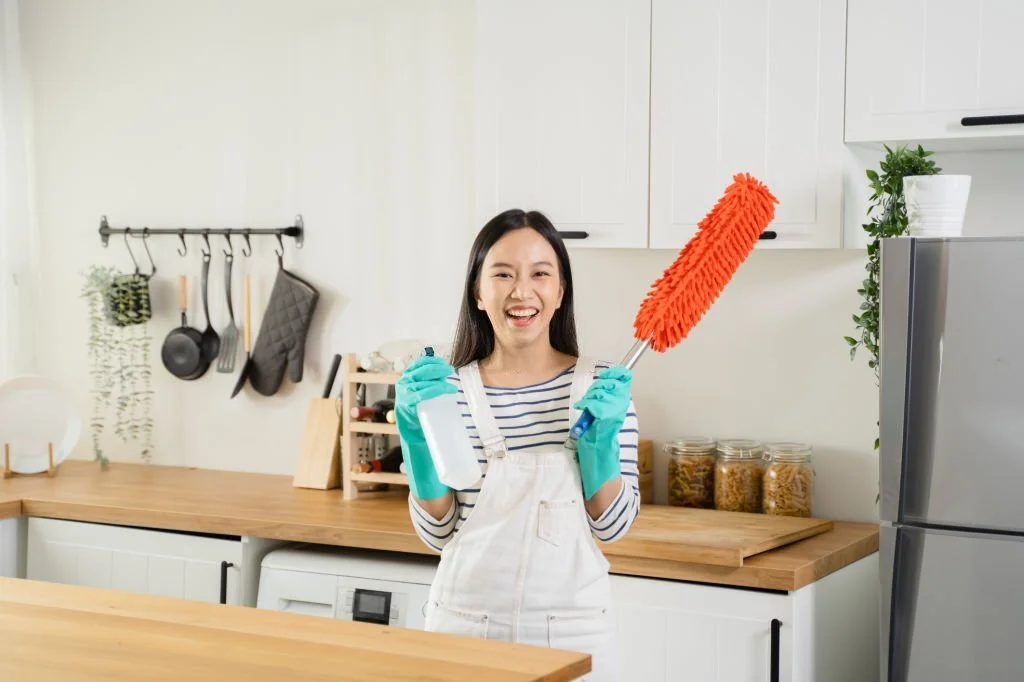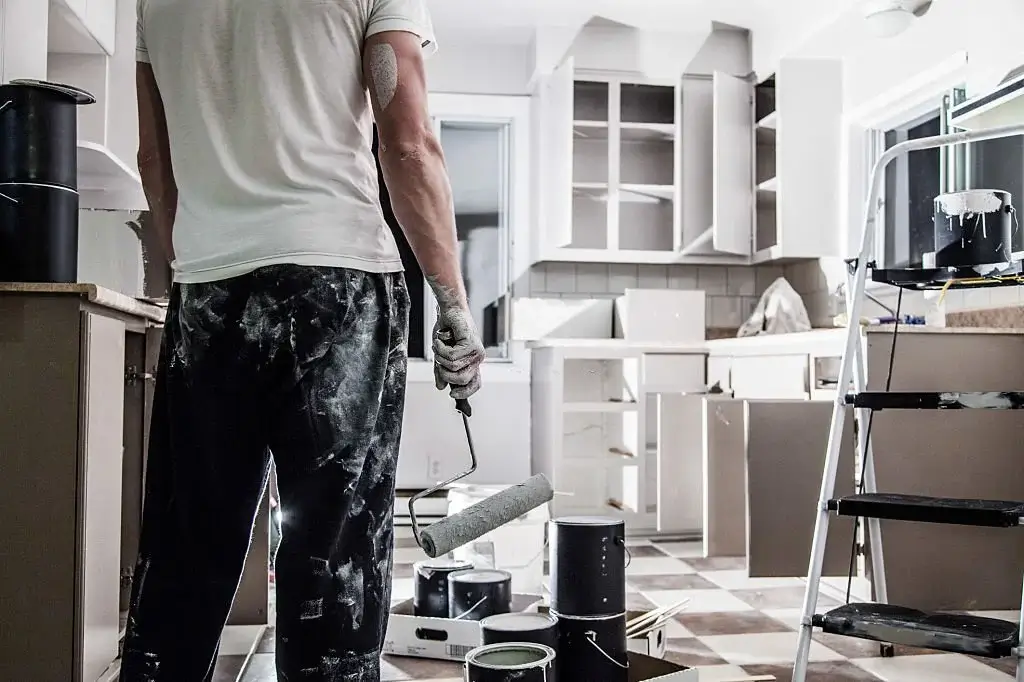
Is fusion paint good for kitchen cabinets? Indeed, fusion paint is an excellent choice for kitchen cabinets due to its durability, resistance to moisture and stains, easy cleaning, and versatility. It can be used on various surfaces and comes in a range of colors and finishes, making it a reliable and cost-effective option for updating your kitchen cabinets.
If you’re planning to refresh your kitchen cabinets, you may be wondering what type of paint to use. There are many options available, but one that has gained popularity in recent years is fusion paint.
In this guide, we’ll explore whether fusion paint is a good choice for kitchen cabinets and what you need to know before starting your painting project.
What is Fusion Paint?
Fusion paint is a water-based acrylic paint that is specifically designed for use on furniture and cabinetry. It contains a mixture of resins, pigments, and additives that improve its durability, adhesion, and finish.
What sets fusion paint apart from regular paint is its ability to be self-leveling, which means it spreads evenly and smoothly over the surface, reducing the appearance of brush strokes and creating a professional-looking finish.
Why Is Fusion Paint Good for Kitchen Cabinets? (Pros)
If you’re considering painting your kitchen cabinets, you may be wondering if fusion paint is a good option for you. Here are some of the Pros of using fusion paint for your kitchen cabinets:
- Durability: Fusion paint is highly durable and resistant to moisture, stains, and scratches. This is essential in a kitchen where spills and splatters are common.
- Easy to clean: Fusion paint is easy to clean, making it ideal for a kitchen environment.
- Versatility: Fusion paint can be used on a variety of surfaces, including wood, MDF, metal, and laminate, making it a versatile option for any kitchen.
- Range of colors and finishes: Fusion paint is available in a range of colors and finishes, including matte, satin, and gloss, allowing homeowners to choose the perfect look for their kitchen.
- Self-leveling: Fusion paint is formulated to be self-leveling, which means it spreads evenly and smoothly over the surface. This helps to reduce the appearance of brush strokes and creates a professional-looking finish.
- Built-in topcoat: Fusion paint has a built-in topcoat that cures to a washable matte sheen. This means you don’t need to apply a separate topcoat, saving you time and money.
Cons of Using Fusion Paint for Kitchen Cabinets
While fusion paint has many benefits, there are also some potential drawbacks to consider:
- Matte finish: Fusion paint dries to a matte finish, which may not be desirable for some homeowners who prefer a glossy finish.
- Limited gloss options: While fusion paint is available in a range of finishes, the gloss options are limited compared to other types of paint.
- Surface limitations: Fusion paint is formulated for use on furniture and cabinetry and may not adhere well to certain surfaces, such as plastic or metal.
It’s important to weigh the pros and cons of using fusion paint for your kitchen cabinets to determine if it’s the right choice for your project.
When to Use Fusion Paint for Kitchen Cabinets
When it comes to painting kitchen cabinets, choosing the right paint is essential for achieving a long-lasting and durable finish. Fusion paint is an excellent option for kitchen cabinets in a variety of situations. Here are some scenarios where using fusion paint for your kitchen cabinets would be appropriate:
- High-Traffic Kitchens: If your kitchen gets a lot of foot traffic and heavy use, fusion paint’s durability and resistance to moisture, stains, and scratches make it an ideal choice. It will hold up well under daily wear and tear, and you won’t have to worry about constantly touching up or repainting your cabinets.
- Budget-Conscious Projects: Fusion paint can save you time and money in the long run because it is self-leveling and has a built-in topcoat, eliminating the need for additional priming, painting, or sealing. It is also relatively inexpensive compared to other high-quality paints on the market.
- Quick and Easy Refreshes: If you’re looking to update the look of your kitchen cabinets without a major renovation, fusion paint can be a quick and easy solution. It comes in a range of colors and finishes, allowing you to achieve your desired look with minimal effort.
While fusion paint is an excellent choice for many kitchen cabinet painting projects, there are some situations where other types of paint might be a better choice. For example:
- Glossy Finishes: If you prefer a glossy finish for your kitchen cabinets, fusion paint’s limited gloss options may not meet your needs. In this case, a different type of paint may be a better choice.
- Challenging Surfaces: Fusion paint can be used on a variety of surfaces, but it may not adhere well to some types of plastics or laminates. In these situations, it’s important to choose a paint specifically designed for those surfaces.
Difference Between Fusion Paint and Regular Paint
When it comes to painting kitchen cabinets, it’s important to understand the difference between fusion paint and regular paint. While traditional paints may be less expensive, they lack the unique features that make fusion paint an ideal choice for kitchen cabinets.
Fusion Paint vs Regular Paint
Here are some of the key differences between fusion paint and regular paint:
- Application: Fusion paint is a self-leveling paint that spreads evenly and smoothly over the surface, creating a professional-looking finish. Regular paint may require multiple coats and may not spread as easily, resulting in brush strokes or an uneven finish.
- Durability: Fusion paint is highly durable and resistant to moisture, stains, and scratches, making it an ideal choice for kitchen cabinets. Regular paint may not be as durable and may require touch-ups or repainting over time.
- Maintenance: Fusion paint is easy to clean and maintain, which is important for kitchen cabinets that are exposed to spills and splatters. Regular paint may require special cleaning products or more frequent touch-ups.
When to Use Fusion Paint vs Regular Paint
While fusion paint is a great choice for kitchen cabinets, there may be instances where regular paint is a better option. Here are a few examples:
- If you’re on a tight budget, regular paint may be a more cost-effective choice than fusion paint.
- If you’re looking for a high-gloss finish, regular paint may offer more options than fusion paint.
- If you’re painting a surface that doesn’t require the same level of durability as kitchen cabinets, regular paint may be a suitable option.
How To Use Fusion Mineral Paint On Kitchen Cabinets
Additional Preparation Steps for Using Fusion Paint
To ensure a successful project when using fusion paint for kitchen cabinets, it’s important to properly prepare the surface before painting. Here are some additional steps to consider:
Sanding
Sanding the surface is an essential step in preparing cabinets for fusion paint. This removes any imperfections and creates a smooth surface for the paint to adhere to.
Filling
Filling any dents or gouges in the surface of the cabinets is important to achieve a smooth finish. This step is particularly important if you’re painting over previous paintwork or if the cabinets are old and worn.
Priming
While fusion paint is formulated to adhere to a variety of surfaces, it’s still important to prime the cabinets before painting. This helps to ensure an even finish and can also prevent any bleed-through of stains or knots in the wood. Select a primer that is suitable for use with fusion paint and apply it evenly over the surface of the cabinets.
Achieving a Professional-Looking Finish with Fusion Paint
To achieve a professional-looking finish with fusion paint, it’s important to select the right paint and tools and to apply the paint correctly. Here are some tips to keep in mind:
Selecting the Right Paint and Tools
Select a high-quality fusion paint that is suitable for use on kitchen cabinets. Choose a paint color and finish that complements your kitchen decor. Use high-quality brushes or rollers to apply the paint evenly and smoothly.
Applying the Paint
Apply the paint using thin, consistent layers, ensuring there are no drips or puddles. Let each coat dry thoroughly before proceeding with the next one for the best results. If necessary, sand lightly between coats to remove any imperfections. Consider adding an additional coat or two of paint for added durability.
By following these tips and properly preparing the surface and applying the paint, you can achieve a professional-looking finish with fusion paint on your kitchen cabinets.
Conclusion
In conclusion, fusion paint is indeed a good choice for kitchen cabinets due to its durability, resistance to moisture, stains, and scratches, ease of cleaning, and versatility across various surfaces. The range of colors and finishes allows homeowners to create their desired look.
When properly prepared and applied, fusion paint offers a cost-effective solution for updating and refreshing kitchen cabinets, resulting in a long-lasting finish that will maintain its appeal for years to come.
Be sure to consider your specific needs and preferences when deciding if fusion paint is the best choice for your kitchen cabinet painting project..



